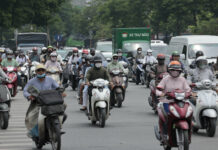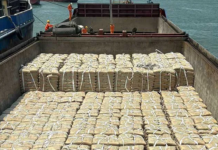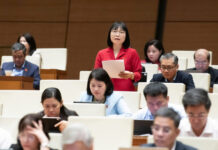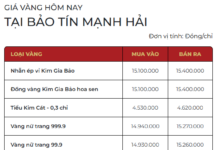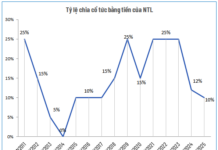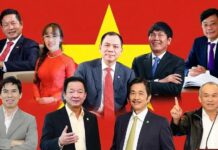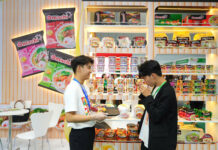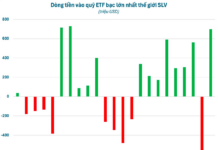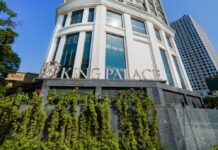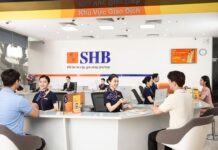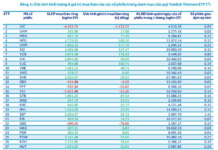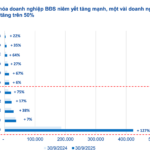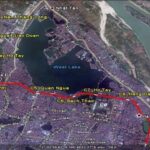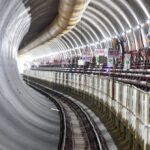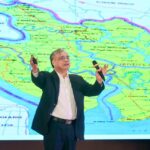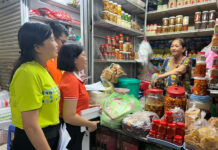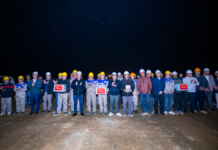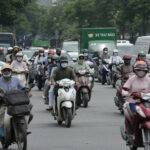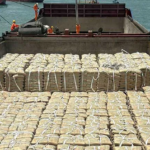The ambitious goal of establishing a “megacity” by expanding the geographical space and economic scale, merging Ho Chi Minh City (HCMC) with its neighboring provinces of Binh Duong and Ba Ria – Vung Tau, is not just a strategic move but also a powerful expression of the Southern Key Economic Region’s aspiration to achieve international stature.
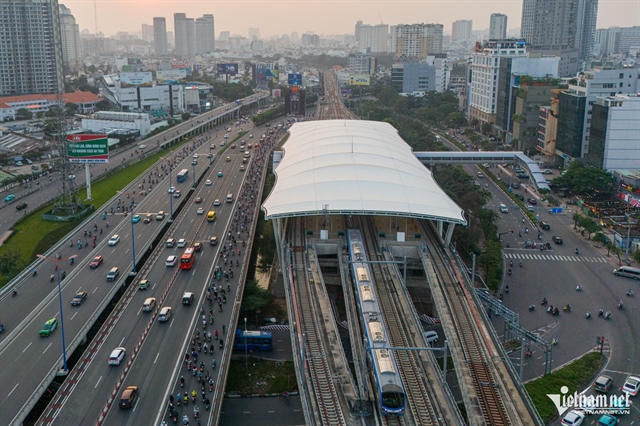
HCMC enters a new development phase following its expanded geographical and economic scope. Photo: Nguyen Hue |
To turn this vision into reality, HCMC has been focusing on two core solution groups: fostering economic growth drivers and comprehensively addressing urban challenges arising from its massive population concentration.
A “Dual Lever” for Global Integration
The ongoing 1st Congress of the HCMC Party Committee for the 2025-2030 term marks a pivotal moment in solidifying the vision of a “HCMC Megacity”—a dynamic economic hub excelling in production, services, finance, and logistics.
The central question remains: What strategic directions should this megacity pursue to become a globally competitive center on par with leading regional cities?
In an interview, Master Le Thanh Hai (Director of the HCMC Economic Application Consulting Center) emphasized that the city should prioritize two key growth engines: establishing an international financial center and developing a modern seaport-logistics system. “These initiatives, leveraging existing strengths, will create a dual momentum for global economic integration and enhance the city’s competitive edge,” he stated.
According to Mr. Hai, the development of the HCMC International Financial Center in Thu Thiem is envisioned as the nucleus of a knowledge-based economy, attracting financial institutions, banks, investment funds, and multinational corporations. This center will not only be an economic zone but also a symbol of Vietnam’s institutional capacity and openness.
To attract high-quality capital and lead innovative economic activities, including fintech, HCMC must operate this center with flexible mechanisms like a financial sandbox, competitive tax policies, and advanced digital infrastructure. Successful models from Singapore and Dubai can serve as valuable references.
The second critical factor is the modernization and regional connectivity of the megacity’s seaport and logistics system, ensuring its efficient utilization.
“Reducing transportation costs and optimizing the Cat Lai – Hiep Phuoc – Cai Mep port cluster will establish an international goods transshipment hub with digitalized infrastructure and green logistics corridors. This synchronized development will not only support HCMC’s import-export activities but also position Vietnam as a strategic link in the global supply chain, especially as production shifts to Southeast Asia,” Mr. Le Thanh Hai emphasized.
With finance driving capital and logistics ensuring efficient goods flow, HCMC can confidently aim to match the region’s leading megacities. It will emerge as a symbol of an open and innovative knowledge-based economy.
Addressing Overload with the TOD Urban Development Model
However, alongside economic aspirations, the HCMC Megacity has long grappled with issues stemming from its large population, such as traffic congestion, environmental pollution, flooding, and infrastructure overload. Post-merger, these pressures have intensified.
Dr. Pham Tran Hai (HCMC Development Research Institute) suggests that to effectively tackle these challenges, the city government should implement a range of solutions, with the Transit-Oriented Development (TOD) model being a key multi-objective approach.
 The TOD model helps HCMC address urban infrastructure challenges. Photo: Nguyen Hue |
The TOD model is a long-term strategy focusing on urban development around high-capacity public transport stations, such as metro stations and bus rapid transit (BRT) lines. TOD areas are designed with mixed-use spaces, high land utilization, and ample amenities.
Mr. Pham Tran Hai explains that TOD offers multifaceted benefits: ensuring convenient travel and quality living for residents, attracting investors by guaranteeing passenger volumes and valuable land around stations, and benefiting the government.
Importantly, TOD promotes sustainable urban development by reducing traffic congestion and environmental pollution through decreased private vehicle use. It also encourages compact urban development around stations, preserving land for social and technical infrastructure like green spaces, open areas, and water regulation zones.
The implementation of TOD in HCMC is legally supported by Conclusion No. 49-KL/TW of the Politburo, National Assembly Resolution No. 98/2023/QH15 on special mechanisms, and other specialized resolutions.
However, to ensure the feasibility and effectiveness of the TOD model in building a high-quality, sustainable HCMC Megacity, Mr. Pham Tran Hai believes that both central and local governments must further refine the legal framework, particularly regarding land and finance.
To realize its global aspirations, the HCMC Megacity must focus on a dual strategy: leveraging an international financial center and modern logistics as drivers of economic globalization, while adopting the TOD model for sustainable urban management.
The synergy between global economic capabilities and superior quality of life will position HCMC as a new symbol of regional development and integration.
Quoc Ngoc
– 22:46 14/10/2025
Unlocking Vietnam’s Potential: The Ambitious Vision to Build an International Financial Hub Fuels a Wave of Innovation
Vietnam stands as one of Asia’s most dynamic economies, fueled by a young workforce, high technology adoption, and surging foreign investment. These advantages position the nation to emerge as a global financial hub. The government’s vision extends beyond capital market consolidation, aiming to cultivate an ecosystem that drives innovation, enhances competitiveness, and fosters sustainable long-term growth.
Fecon Joins Groundbreaking Ceremony for Hanoi Metro Line 2, Undertaking Foundation Treatment at Xuân Đỉnh Depot
Spring Peak Depot is set to become Hanoi’s first pilot TOD hub, seamlessly integrating transportation interchange with commercial, service, and residential spaces. This innovative development promises to be a new growth engine for the northern region of the capital.


